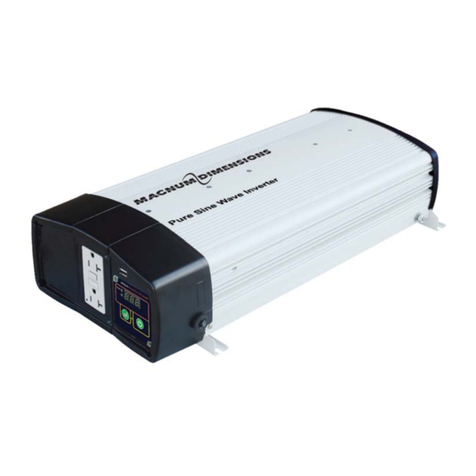
ii © 2017 Sensata Technologies
IMPORTANT PRODUCT SAFETY INSTRUCTIONS
This manual contains safety instructions that must be followed during the
installation and operation of this product. Read all instructions and safety
information on the inverter and in this manual before installing or using.
Safety Symbols
To reduce the risk of electrical shock, fire, or other safety hazard, the
following safety symbols have been placed throughout this manual to
indicate dangerous situations and important safety instructions.
WARNING: Indicates that failure to take a specified action could
result in physical harm to the user.
CAUTION: Indicates that failure to take a specified action could result
in damage to the equipment.
Info: Indicates information that emphasizes or supplements important
points of the main text.
Product Safety Warnings
WARNINGS: Failure to follow the instructions below and in this
manual can result in death or serious injury.
• All electrical work must be performed in accordance with local, state and
federal electric codes.
• This product is designed for indoor use only. Do not expose to rain,
snow, moisture, or liquids of any type.
• Use insulated tools to reduce the chance of electrical shock or accidental
short circuits. Remove all jewelry such as rings, watches, bracelets,
etc., when installing or performing maintenance on the inverter.
• Always disconnect the batteries or energy source prior to installing or
performing maintenance on the inverter. Live power may be present at
more than one point since an inverter utilizes both batteries and AC.
• Do not cover or obstruct any air vent openings and/or install in a zero-
clearance compartment. Always operate the unit in an open area.
• When working with electrical equipment or lead acid batteries, have
someone nearby in case of an emergency.
• Study and follow all the battery manufacturer’s specific precautions when
installing, using, and servicing the battery connected to the inverter.
• When working with batteries wear eye protection and gloves, and avoid
touching your eyes. Have fresh water and soap nearby in case battery
acid comes in contact with eyes. If this occurs, cleanse right away with
soap and water for a minimum of 15 minutes and seek medical attention.
• Batteries produce explosive gases, DO NOT smoke or have an open
spark or fire near the system.
• Avoid dropping any metal tool or object on the battery. Doing so could
create a spark or short circuit which goes through the battery or another
electrical tool and may cause an explosion.
• Explosion hazard! DO NOT use this inverter in the vicinity of flammable
fumes or gases (such as propane tanks or large engines).
• These inverters contain no user-serviceable parts. See the Warranty
section for how to handle service issues.





























